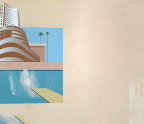
THIRTY-SIX-YEAR-OLD Sunil Vitkar’s vegetable cart in a Mumbai suburb has two QR (Quick Response) code stickers—Paytm and PhonePe—printed on white paper. They are randomly placed for scanning in the midst of a scattering of potatoes and onions. Even in a noisy market, his ears are alert to the Paytm sound box near his galla (cash box), which frequently plays the “payment received” voice notification. At times, customers also flash their mobile screens with the now-very-familiar ‘payment successful’ message. The sound box, which saves him from customers showing fake confirmation receipts, costs a monthly rent of ₹125. But Vitkar doesn’t mind the expense.
The QR code, which uses the UPI (Unified Payments Interface) technology, allows money transfers in seconds to Vitkar’s bank account. UPI enables seamless money transfers between different banks and payment networks. Today, 80 per cent of Vitkar’s daily sales happens through QR codes. He also makes payments via UPI at the mandi, or wholesale market, where he picks up his wares. And they don’t mind it either. Vitkar quips, “Ab to bank wallo ke bhi phone call aate hain loan ke liye (nowadays, banks have also started calling me to offer loans).”
Today, millions of merchants are using UPI for their payments. It’s inconceivable to see a pani puri vendor, barber or cigarette seller without a QR code. At last count, 30 million-plus merchants are using QR codes, according to data from consulting firm BCG. Mind you, there are only 6 million point-of-sale (POS) machines for swiping credit and debit cards, despite decades of presence. “UPI is now a juggernaut in its own right. It’s a train that has left the station,” says Ramesh Narasimhan, CEO of Worldline India, a payments solutions provider.
UPI, which instantly authenticates and authorises money transfers, handled a record six billion-plus transactions in July alone, the most since its launch in 2016. For perspective, the number of UPI transactions executed monthly is more than five times the number of mobile connections in the country. Data from National Payments Corporation of India (NPCI) says that the total value of transactions via UPI reached ₹10.62 lakh crore in July alone, which is close to the total amount of bad loans written off by India’s banks in the past five years. In barely six years, UPI accounts for 16 per cent of all retail payments. In the process,






